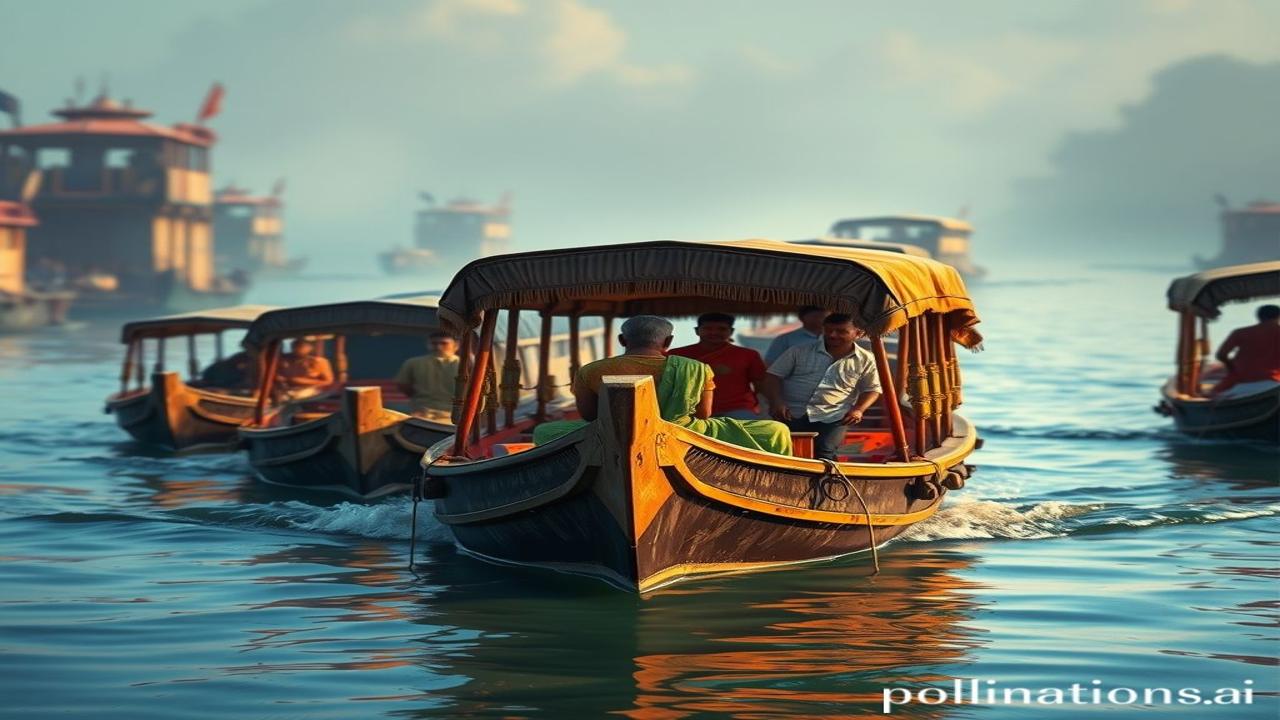Waqt Ki Lehron Pe Safar: India Ke Forgotten Water Transport Systems
Kabhi socha hai, Ganga kinare baithe kisi sadhu ne kya dekha hoga? Kya mahsus kiya hoga, jab pehli baar kisi ne lakdi ke tukde ko joda hoga, usse ek raft banayi hogi aur nadi paar karne ki himmat ki hogi? Waqt ki dhool mein dab gayi hain woh kahaniyan, lekin aaj bhi un lehron mein gunjti hain. Let’s dive into the amazing world of traditional water transport systems in India!
Pani Hi Jeevan Hai: Historical Context
Water transport in India is older than you think! We’re talking thousands of years, back to the Indus Valley Civilization (around 3300-1700 BCE). Archaeological evidence shows they used boats for trade and travel along the Indus River and even maritime trade with Mesopotamia. Imagine, those early engineers and sailors!
- Kya Hai?: Essentially, we’re talking about ways people moved across water using simple and ingenious technologies. Think boats, rafts, ferries, even canals and ingenious systems to move water for irrigation.
- Kab aur Kahan?: From the Indus Valley Civilization to the powerful empires like the Mauryas, Guptas, and Mughals, water transport played a vital role across the Indian subcontinent. Coastal regions like Kerala, Bengal, and Gujarat have a particularly rich history of maritime activities.
- Kyun Zaruri?: Waterways were the highways of ancient India. They facilitated trade, communication, military movement, and even cultural exchange. Rivers like the Ganga, Yamuna, Brahmaputra, and Indus were lifelines, and controlling them meant power.
Ganga Kinare: Daily Life On The Water
Picture this: Ma Rukmini subah jaldi uthti hain. Ganga mein dubki lagati hain, suraj ko pranam karti hain. Uske baad, woh apne pati, Kishan ke liye chai banati hain. Kishan ek “mallāh” (boatman) hai. Har roj woh Ganga paar kar ke bazaar jaata hai, apne gaon ke logon ke liye samaan lata hai.
“Kishan, aaj kya milega bazaar mein?” Rukmini puchti hai.
“Aaj shayad taaza machli milegi, Rukmini. Aur agar Bhagwan ne chaha toh kuch mithaai bhi launga,” Kishan jawab deta hai, apni kashti tayyar karte hue.
Their “kashti” (boat) is not just a mode of transport; it’s their livelihood, their connection to the world. It represents शक्ति and धरोहर, passed down through generations.
Meanwhile, up north, in the kingdom of Chandragupta Maurya, skilled artisans are building massive wooden ships to transport troops and supplies across the rivers. Spies whisper tales of foreign lands reached via the vast oceans.
Aaj Bhi Zinda: Cultural Significance
Even today, you can see echoes of these ancient water transport systems in India. Think of:
- Festivals: The Pushkaram festival, celebrated along various rivers across India, involves elaborate boat processions and symbolizes the reverence for rivers as life-givers.
- Art & Architecture: The intricate carvings on ancient temples often depict boats and river scenes, showcasing the importance of waterways in their lives.
- Language: Many Indian languages are peppered with words related to boats, rivers, and maritime activities, reflecting the historical significance of water transport.
- Values: The respect for rivers as sacred entities, a core aspect of Bharatiyata, stems from the understanding of their vital role in sustenance and transportation.
The simple ferry crossing the Ganga at Varanasi, or the fishermen casting their nets in the backwaters of Kerala – these are living reminders of our rich maritime past.
Interesting Facts: Did You Know?
- Log samajhte hain ki boats sirf lakdi se banti thi… lekin asli sach yeh hai ki many traditional boats were also made from bamboo, reeds, and even animal hides!
- Chandragupta Maurya had a dedicated navy – a testament to the strategic importance of water transport in his empire. His naval strength helped him control key waterways and expand his influence.
Visual Symphony: A Sensory Journey
Imagine the smell of freshly cut wood mingled with the salty breeze of the Arabian Sea. Feel the rough texture of a bamboo raft beneath your feet as it glides silently down a moonlit river. Hear the rhythmic splash of oars cutting through the water, accompanied by the melodic chants of boatmen. These are the sensory experiences that connect us to our water transport heritage. The temple bells echo in the distance, a reminder of the spiritual significance of these waters.
Antim Vichar: A Glimpse Into The Future
“Apo hi stha mayo-bhuvas ta na urje dadhatana, mahe ranaya cakshase” (आपो हि ष्ठा मयोभुवस्ता न ऊर्जे दधातन। महे रणाय चक्षसे ॥) – “O waters, you are the source of happiness; bestow upon us the strength to fulfill our potential and grant us a vision for a brighter future.”
The future of water transport in India lies in embracing sustainable and eco-friendly practices while preserving the rich heritage of traditional systems. Let us learn from the past and harness the power of water responsibly, ensuring a prosperous future for generations to come. Just like those early navigators, we must chart a course towards a sustainable and harmonious relationship with our rivers and oceans.
